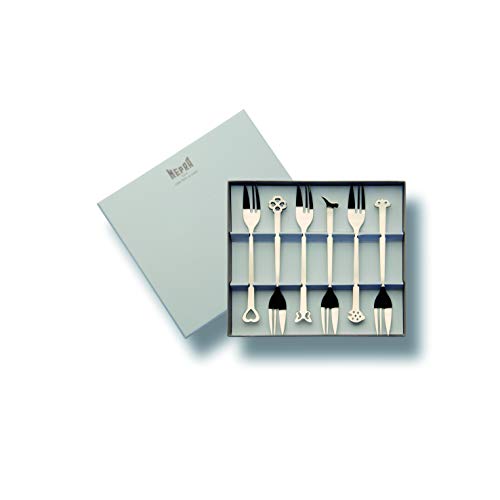
Building your own cabinet doors can be a rewarding and cost-effective way to give your kitchen or bathroom a fresh new look. With the right tools and techniques, you can create custom cabinet doors that fit perfectly and enhance the overall aesthetic of your space.
A table saw is an essential tool for this project, as it allows you to make precise cuts and achieve clean edges. Whether you’re a seasoned woodworker or a DIY enthusiast, this guide will walk you through the step-by-step process of building cabinet doors with a table saw.
Step 1: Measuring and Planning: Before you begin, take accurate measurements of your existing cabinet openings. This will help you determine the size of the doors you need to build. Consider the style and design you want to achieve, and make a detailed plan for your project.
Step 2: Material Selection: Choose a suitable material for your cabinet doors, such as solid wood, plywood, or medium-density fiberboard (MDF). Each material has its own advantages and considerations, so research and select the one that best fits your needs and budget.
Step 3: Cutting the Panels: Using your table saw, carefully cut the selected material into panels according to the measurements from Step 1. Ensure that your saw blade is set to the appropriate height and make precise cuts to achieve clean and straight edges. Safety should always be a top priority, so don’t forget to wear protective gear like safety glasses and gloves.
Step 4: Adding Decorative Details: If desired, you can add decorative details to your cabinet doors using a router or other appropriate tools. Consider options such as beading, molding, or cutouts to enhance the visual appeal of your doors. Take your time and pay attention to details to achieve the desired result.
Step 5: Assembling the Doors: Once all the panels and decorative details are ready, it’s time to assemble the cabinet doors. Use appropriate joinery techniques such as mortise and tenon joints or simple butt joints, depending on your skill level and the material you’re working with. Take your time to ensure everything fits snugly and securely.
Building cabinet doors with a table saw is a rewarding DIY project that allows you to customize your space and showcase your woodworking skills. Remember to take accurate measurements, choose the right materials, and follow proper safety procedures when using your table saw. With patience and attention to detail, you can create beautiful cabinet doors that will transform the look of your kitchen or bathroom.
Step-by-Step Guide to Building Cabinet Doors with a Table Saw
Building cabinet doors can be a challenging but rewarding project. With the right tools and techniques, you can create custom cabinet doors that add a beautiful touch to your kitchen or bathroom cabinets. In this step-by-step guide, we will show you how to build cabinet doors using a table saw.
Materials Needed:
- Wood boards
- Table saw
- Measuring tape
- Pencil
- Safety goggles
- Sandpaper
- Wood glue
- Clamps
- Router (optional)
Step 1: Measure and Cut the Wood
Using a measuring tape, measure the dimensions of the cabinet door opening. Add an additional 1/2 inch to the width and height to allow for clearance. Mark these measurements on your wood boards using a pencil.
Next, set your table saw to the width of the cabinet door and adjust the blade height to the desired depth. Carefully cut the wood boards to the correct size using the table saw. Always wear safety goggles when operating a table saw.
Step 2: Sand the Wood
After cutting the wood, use sandpaper to smooth any rough edges and ensure a clean finish. Sand both the front and back surfaces of the wood boards until they are smooth to the touch.
Step 3: Glue the Wood Boards
Apply wood glue along the edges of the wood boards that will come together to form the cabinet door. Use clamps to hold the boards firmly in place while the glue dries. Wipe off any excess glue with a damp cloth.
Step 4: Optional – Add Decorative Profile with a Router
If you want to add a decorative profile to your cabinet doors, you can use a router. Attach a router bit with the desired profile to your router and carefully run it along the edges of the cabinet door. This will create an attractive design.
Step 5: Allow the Glue to Dry
Leave the clamps on the cabinet door for at least 24 hours to allow the wood glue to fully dry and set. This will ensure a strong and durable cabinet door.
Step 6: Install the Cabinet Door
Once the glue has dried, remove the clamps and install the cabinet door onto the cabinet frame. Attach hinges to the door and frame, making sure they are properly aligned. Use a drill to screw the hinges into place.
Step 7: Test and Adjust
After installing the cabinet door, test its movement and make any necessary adjustments. Ensure that the door opens and closes smoothly and aligns properly with the cabinet frame.
Step 8: Apply Finish(optional)
If desired, you can apply a finish to your cabinet doors to protect the wood and enhance its appearance. Choose a finish that is suitable for your chosen wood type and follow the manufacturer’s instructions for application.
By following these step-by-step instructions, you can successfully build cabinet doors using a table saw. Remember to take your time, prioritize safety, and enjoy the process of creating beautiful, custom cabinet doors for your home.
Materials and Tools Needed
Before you begin building cabinet doors with a table saw, you will need to gather the necessary materials and tools. Here is a list of what you’ll need:
Materials:
- Plywood or solid wood boards
- Wood glue
- Screws or nails
- Sandpaper
- Wood filler
- Stain or paint
Tools:
- Table saw
- Miter gauge
- Circular saw
- Measuring tape
- Pencil
- Clamps
- Router
- Rabbeting bit
- Chisel
- Hammer
Having these materials and tools ready before you start will ensure that you can complete the project without interruptions. It’s also a good idea to have safety equipment, such as safety goggles and ear protection, on hand for your own protection.
Preparing the Wood
Before you can start building your cabinet doors, it’s important to properly prepare the wood. This involves a few steps to ensure that your doors come out looking great and fit perfectly.
1. Selecting the Wood
The first step is to choose the type of wood that you want to use for your cabinet doors. Hardwoods like oak, maple, or cherry are commonly used for their durability and attractive grain patterns. Make sure to select wood that is flat and free of any defects or knots that could weaken the door.
2. Cutting the Wood
Once you have your chosen wood, it’s time to cut it to the appropriate size for your cabinet doors. Use a table saw to make precise cuts, ensuring that all your pieces are consistent in size. Measure twice and cut once to avoid any mistakes.
3. Planing and Sanding
After cutting the wood, you may need to plane the edges to ensure they are straight and smooth. Use a planer to remove any imperfections and create a uniform surface. Once the edges are planed, use sandpaper to sand the surface of the wood, starting with a coarse-grit sandpaper and gradually moving to a finer grit for a smooth finish.
4. Joinery
If you plan on using joinery techniques like mortise and tenon or dovetail joints, now is the time to create those. Use a mortising machine or chisel to create the necessary slots and cuts, ensuring a tight and sturdy fit.
By properly preparing the wood, you’ll have a solid foundation for building your cabinet doors and ensure that they turn out beautifully and stand the test of time.
Assembling and Finishing the Cabinet Doors
Once you have cut and shaped the cabinet door panels, it’s time to assemble them using a table saw. This process involves careful alignment and securing of the panels to ensure a sturdy and professional-looking result.
Step 1: Aligning the panels
Start by laying out the panels on a flat and clean surface, with the front sides facing down. Make sure the edges are flush and lined up correctly. Use clamps or weighted objects to hold the panels in place while you work.
Step 2: Applying adhesive
Using a brush or roller, apply a layer of wood adhesive along the edges of the panels that will be joined together. Make sure to spread the adhesive evenly and cover the entire surface.
Step 3: Joining the panels
Once the adhesive has been applied, carefully align the panels and press them together. Apply even pressure along the seams to ensure a tight bond. Use clamps to hold the panels together while the adhesive sets.
Step 4: Reinforcing the joints
To strengthen the joints, you can use wooden dowels or biscuits. Drill holes and insert dowels or biscuits at regular intervals along the seams. Apply wood adhesive to the dowels or biscuits before inserting them into the holes.
Step 5: Finishing touches
After the adhesive has dried and the joints are secure, sand the cabinet doors to remove any rough edges or imperfections. Apply a coat of wood stain or paint of your choice to achieve the desired finish.
Remember to let the finish dry completely before attaching the cabinet doors to your project. This will ensure a polished and professional look for your cabinets.






